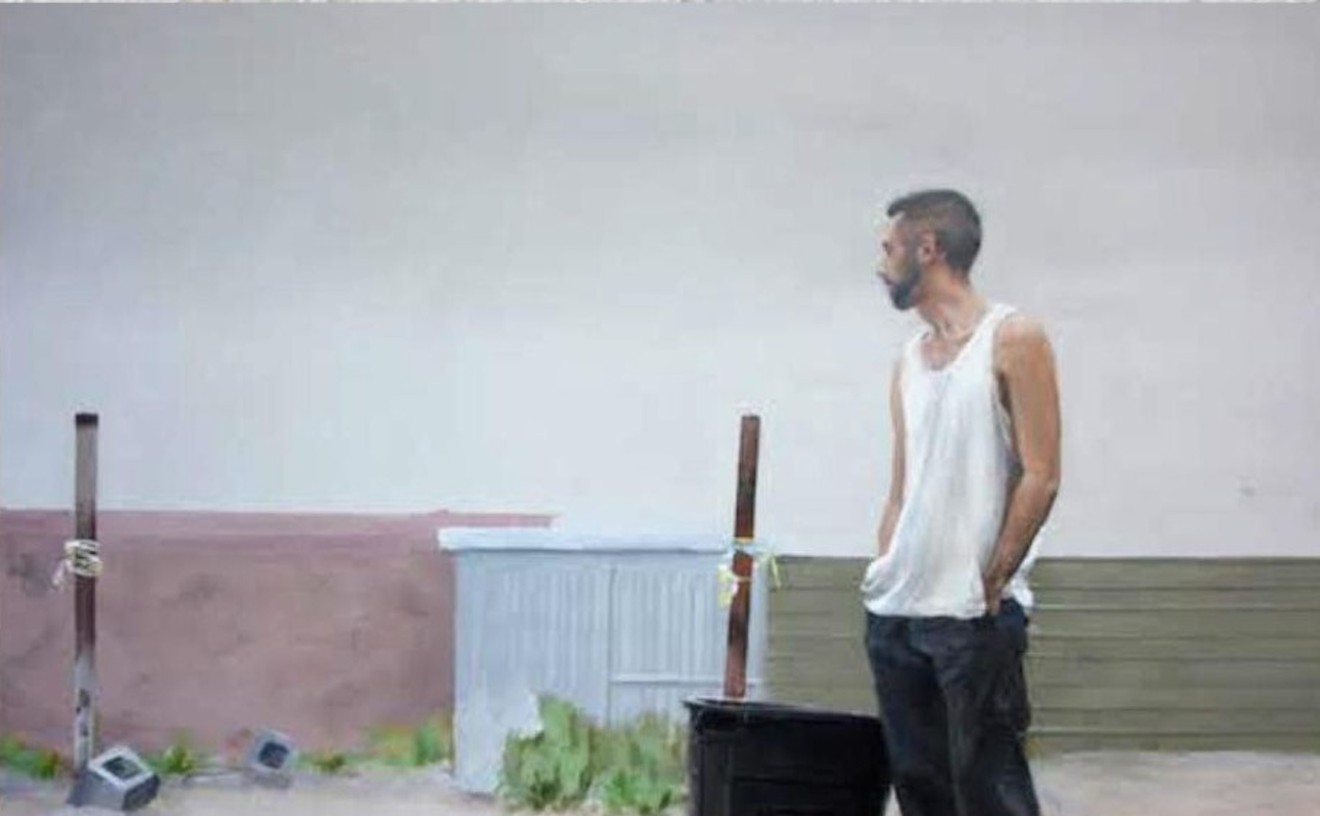This is a large, brooding show. And probably for good reason. Despite the increasingly elite status some Cuban artists have achieved as cultural merchants who can travel the world, get grants and fellowships, and bring home foreign currency, Cuban artists haven't had a lot to cheer about in the past decade. In the years since the collapse of the Soviet Union, their materials, like most other supplies in Cuba, have dwindled, and they've seen nearly their entire generation of teachers defect to other shores.
There are occasional flourishes of humor here--like Rene Francisco's "Tubo Sutra," a well of libido made out of an old tractor tire and spent tubes of toothpaste modeled in the sexual positions--all but the missionary one--of the Kama Sutra. But this is the humor of having to scrape by in a culture dominated by scarcity.
Abel Barroso approaches the nation's poverty through cuckoo clocks that, in toylike fashion, propose a variety of grim historical ways to boost the economy--slavery and prostitution among them. Fernando Rodriguez's scrap-wood wagon train contains wooden images of basic necessities that have been hard to come by in the 1990s.
And Sandra Ramos and Osvaldo Yero concentrate on the losses through defections of friends, family, artists and thinkers.
Hardly the stuff of the giggles.
There are more than 50 works here by 19 artists (three of whom work as a team). Most of the artists are among the second generation to be educated under Castro. Whatever failures can be pinned to his nearly 40-year-old regime, one of its undeniable successes has been its system for training a cultural elite. Cuba has schooled artists the way Rumania once trained gymnasts, plucking promising-looking kids who can draw from the general throng of 12-year-olds and putting them on a 12-year track that funnels a relative handful of the best of them into Havana's Instituto Superior de Arte. All but three of the 19 artists in this show studied there.
Since its opening, on the grounds of the old Havana Country Club in the mid-1970s, the ISA has been the nation's premier culture club. Each entering class has fewer than 20 students. Until the early 1990s, when the collapse of the Soviet empire brought hard times to Cuba, the school was able to provide them and their teachers with relatively free access to materials.
The original intent might have been to assure the revolution a steady supply of topnotch visuals. But the outcome helps to explain why despots the world over usually round up the artists and intellectuals immediately following the coup. By the late 1980s, the ISA had become an incubator of cultural and political discontent.
The oddity was that, unlike the dissident art being made behind the Iron Curtain, Cuba's was made above ground, in full view. The state openly sponsored artists, but when the Castro regime was cut by the dissident edge of some of the art produced in the late 1980s, it began reining in the artists. Many left Cuba--initially with the government's cooperation--for the sunnier, more welcoming cultural climates of other countries.
In some respects, the works in this show snapshot what has happened recently to the political and social content of Cuban art. Rather than exhibit images that directly discredit or disparage the leaders and heroes of the revolution, artists have turned their attention toward the hardships and longings that the past decade has brought to Cuban life.
Jose Toirac's "Made in Manila," and "Body Bags" painted with the images of Cuban soldiers, and his installation to the martyrs of Cuba's interior ministry walk the political line. But many of the other works dwell on the personal and cultural sense of loss produced by the flow of Cuban artists out of the country.
Many of the works have the material grittiness and resourcefulness of prison art--and the compulsion to make something out of practically nothing.
Rene Francisco's assemblages are made from items as varied as toothpaste tubes, batteries, telephone and plumbing parts. As mentioned, Fernando Rodriguez builds his sculptures out of scraps of wood and other materials. And sisters Yamilys and Jacqueline Brito incorporate a variety of found surfaces and materials in their small prints, collages and paintings.
It would be difficult to characterize such borrowings as nostalgic. Yet they do take the emphatically unrevolutionary position that obsolescence breeds renewal. Regardless of revolutionary ambitions to build a paradise from scratch--to embrace only the new values--the life and meaning of art depend on borrowed, revised and renovated images.
Vanity of vanities, saith the preacher, there is nothing new under the sun, not even the love gymnastics of "Tubo Sutra."
"Contemporary Art From Cuba" continues through Sunday, December 13, at ASU Art Museum in Tempe.










